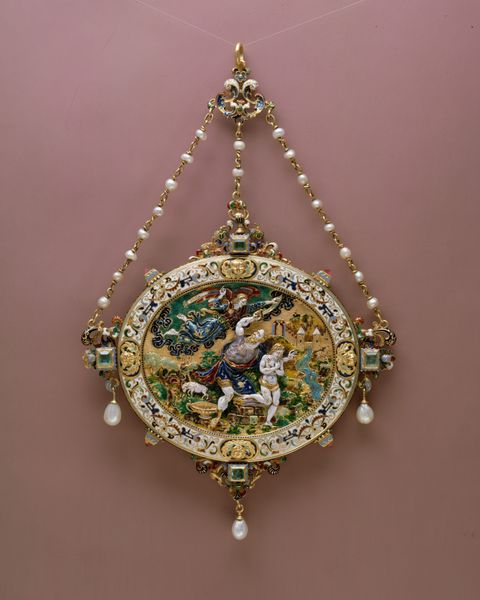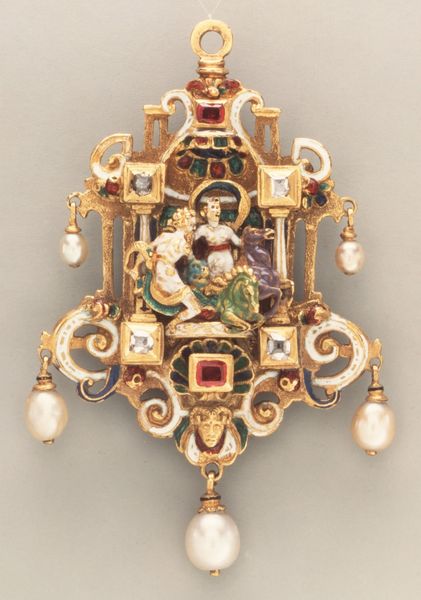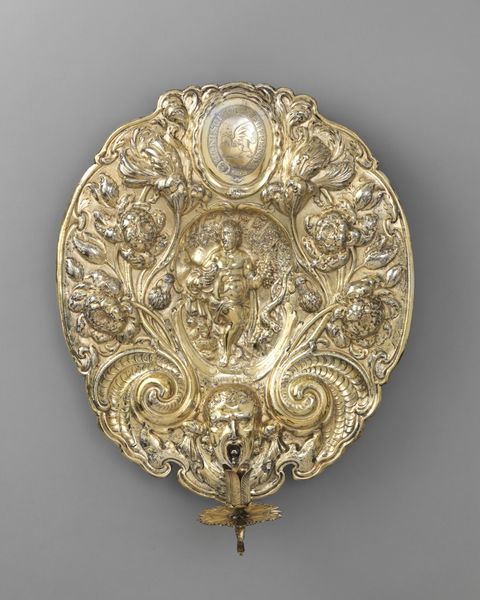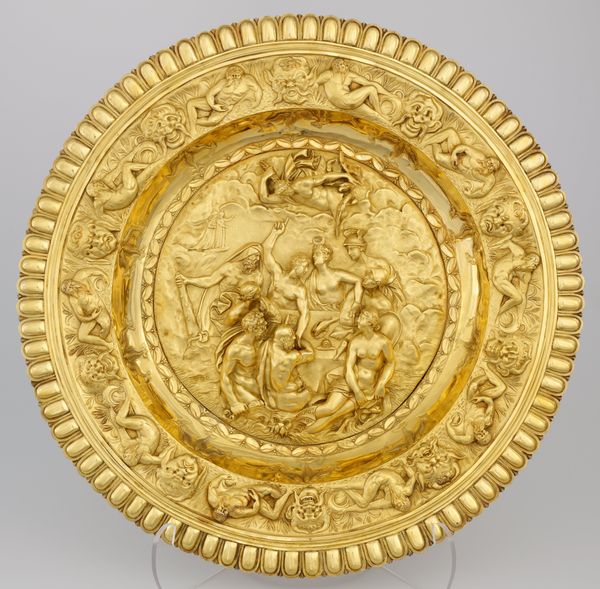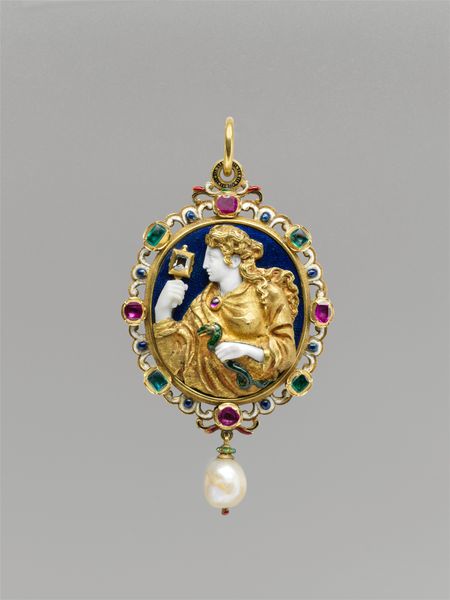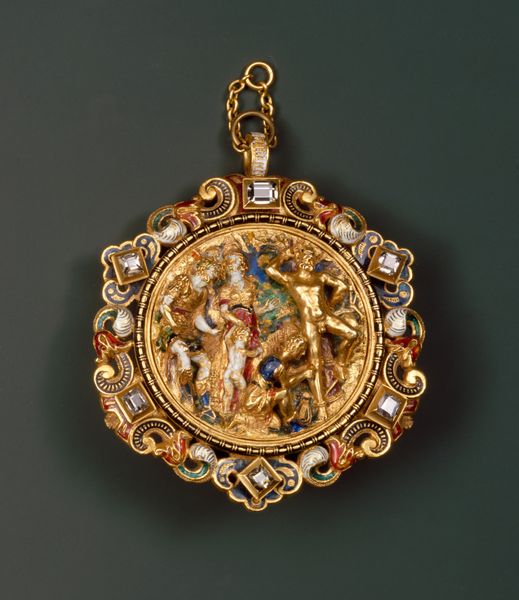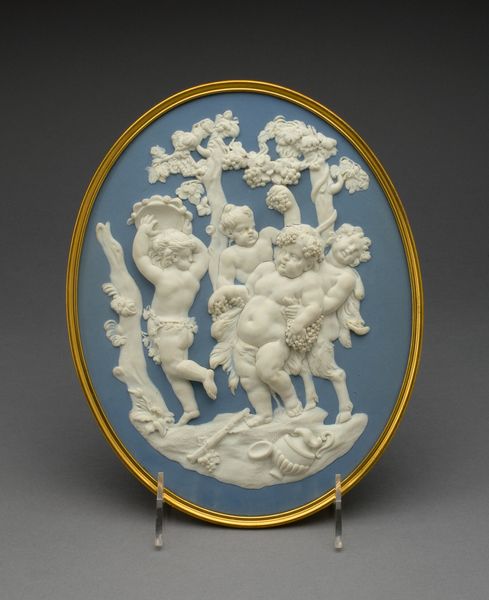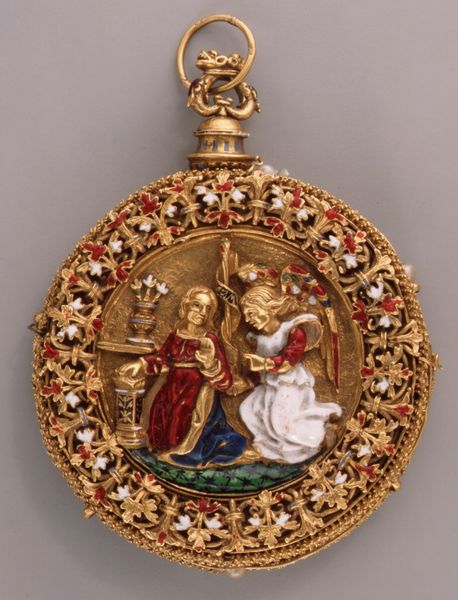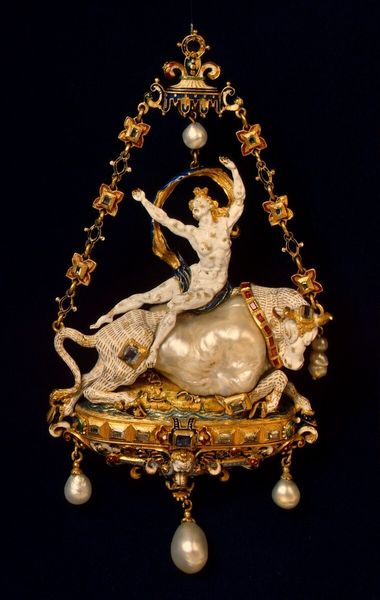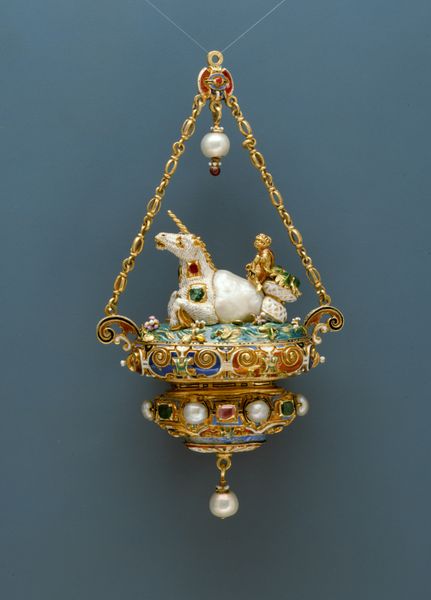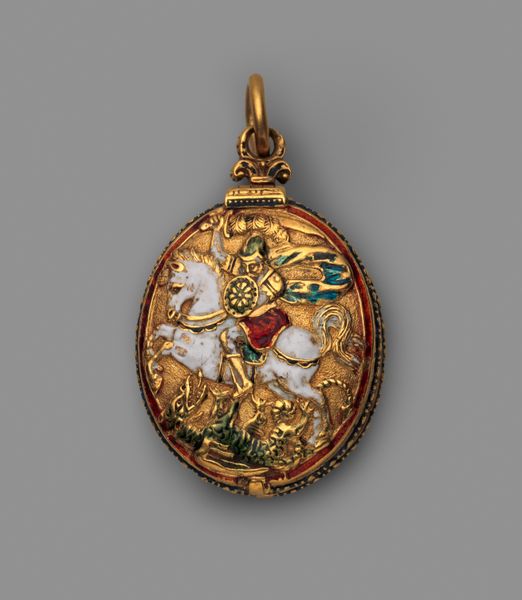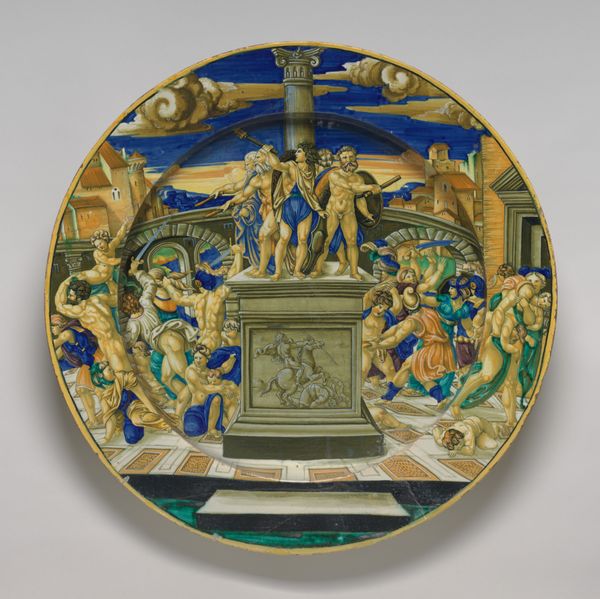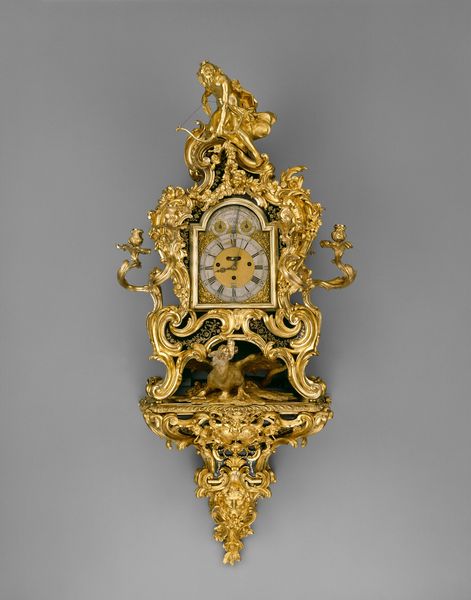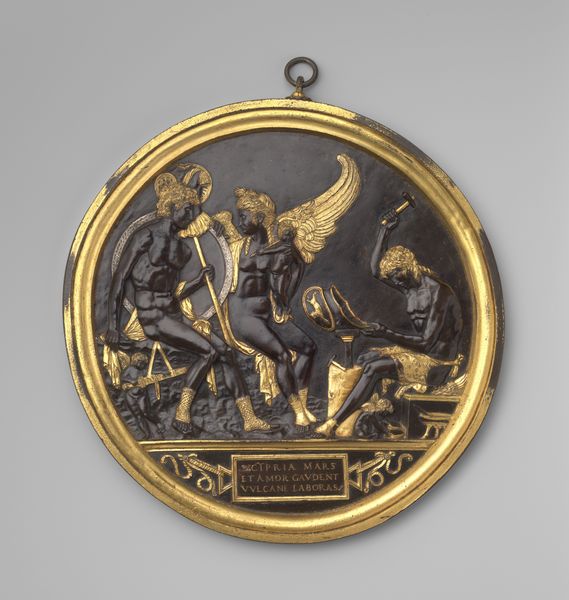
metal, gold, relief, sculpture, enamel, ivory
#
portrait
#
metal
#
gold
#
relief
#
landscape
#
figuration
#
11_renaissance
#
sculpture
#
enamel
#
italian-renaissance
#
ivory
#
miniature
Dimensions: Diameter: 2 1/4 in. (5.7 cm)
Copyright: Public Domain
Curator: Here we have a late 15th-century gold relief of Saint John the Baptist attributed to Antonio Pollaiuolo. It's quite small, almost jewel-like, crafted in gold, enamel, and ivory. What are your initial thoughts? Editor: It feels intensely personal. There's a dreamlike quality to the scene, a figure isolated within this radiant landscape, miniaturized but somehow monumental. Curator: Precisely. Considering its precious materials, we can speculate about its intended owner. Was it commissioned for private devotion or displayed publicly to denote wealth and social standing? The level of detail suggests a patron with both refined artistic sensibility and means. Note the exquisite use of enamel to suggest the folds of fabric, to denote landscape. Editor: Yes, and observe the careful articulation of form – how Pollaiuolo has used line and volume to define St. John’s body. His muscularity is not simply an idealized form, but an anatomical study, perhaps derived from direct observation. The whole composition adheres to a strict geometric framework, creating a sense of stability despite the miniature scale. But thinking about the conditions of production, who were the skilled goldsmiths and enamelers responsible for translating Pollaiuolo's vision into tangible form? Curator: Excellent point. These were collaborative workshops; it is hard to disentangle the master's initial design from the execution by specialist craftsmen, bound by their Guilds, wage contracts and market constraints. These materials speak to transcultural consumption as well. We know that the enamel could be sourced in both Venice and France, thus opening to complex provenance questions, not to mention trade routes. Editor: And beyond questions of consumption and production, I wonder if we're meant to read a deeper narrative. The lamb is a clear symbol for Christ, which brings forth associations to John's prophecies and role. But the surrounding landscape almost feels divorced from that iconographic element, and seems to follow more humanistic preoccupations. Curator: Perhaps it reveals an artist caught between late medieval traditions of representing religious figures in formal poses, versus a budding interest in more individualized, humanistic approaches. Editor: Absolutely, an exquisite object, fraught with layers of artistry and social practice. Curator: It is, isn't it? A window into a world of immense skill, expensive resources and developing concepts of the Renaissance era.
Comments
No comments
Be the first to comment and join the conversation on the ultimate creative platform.
